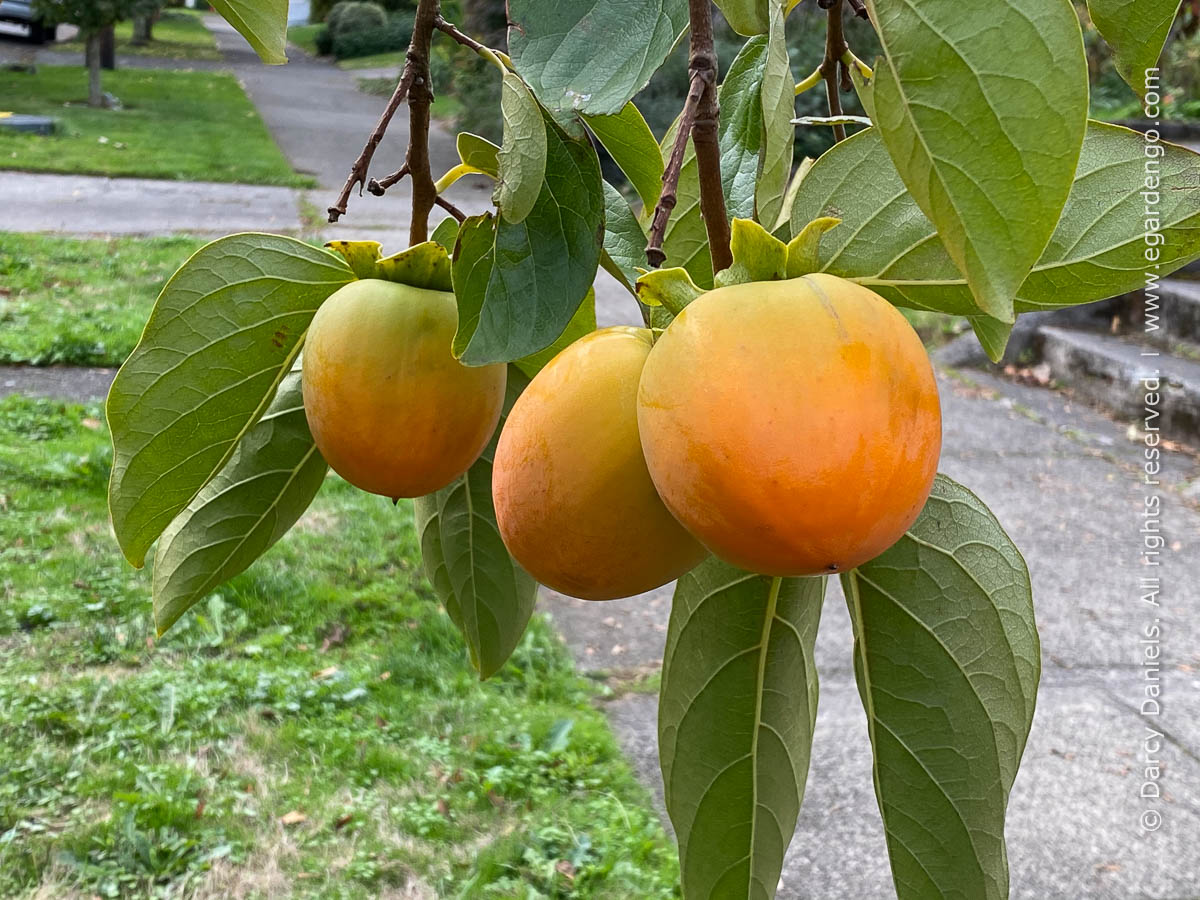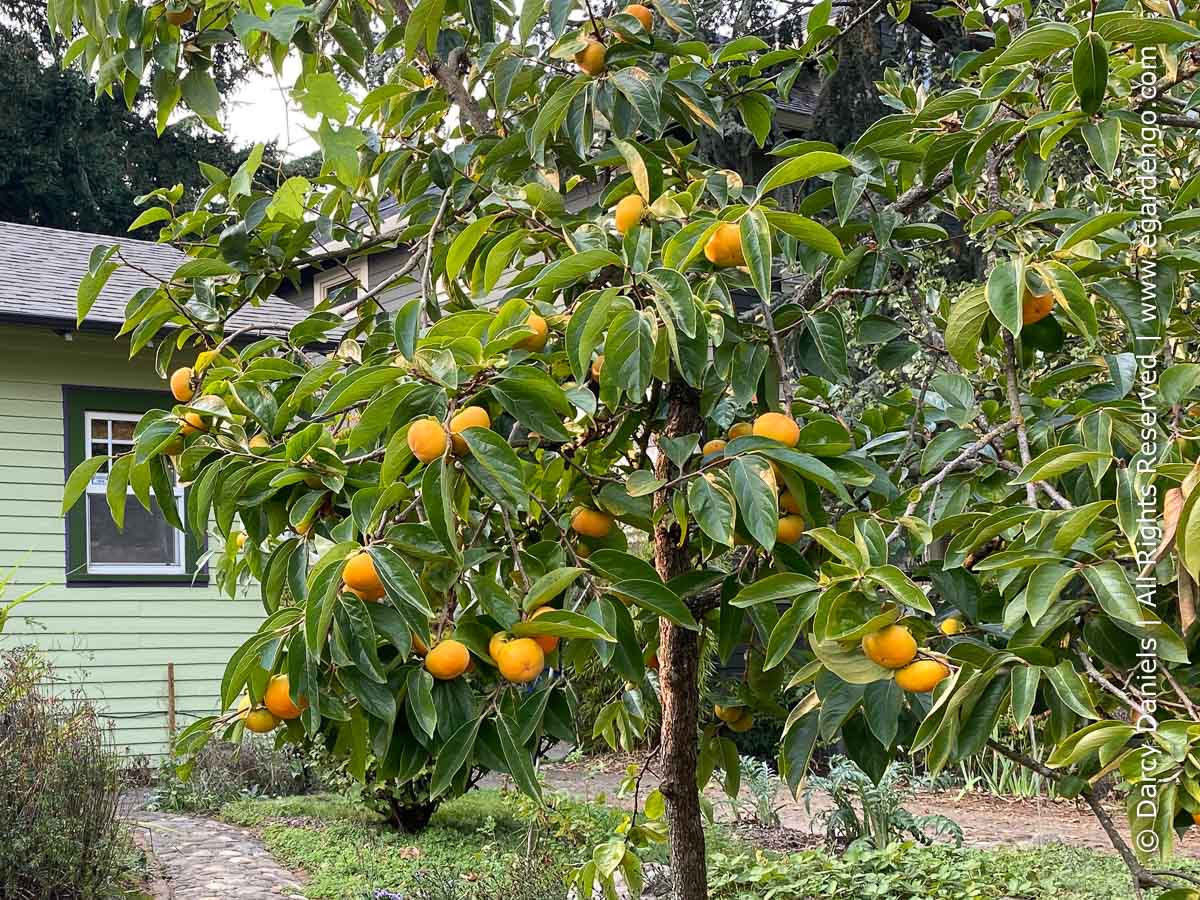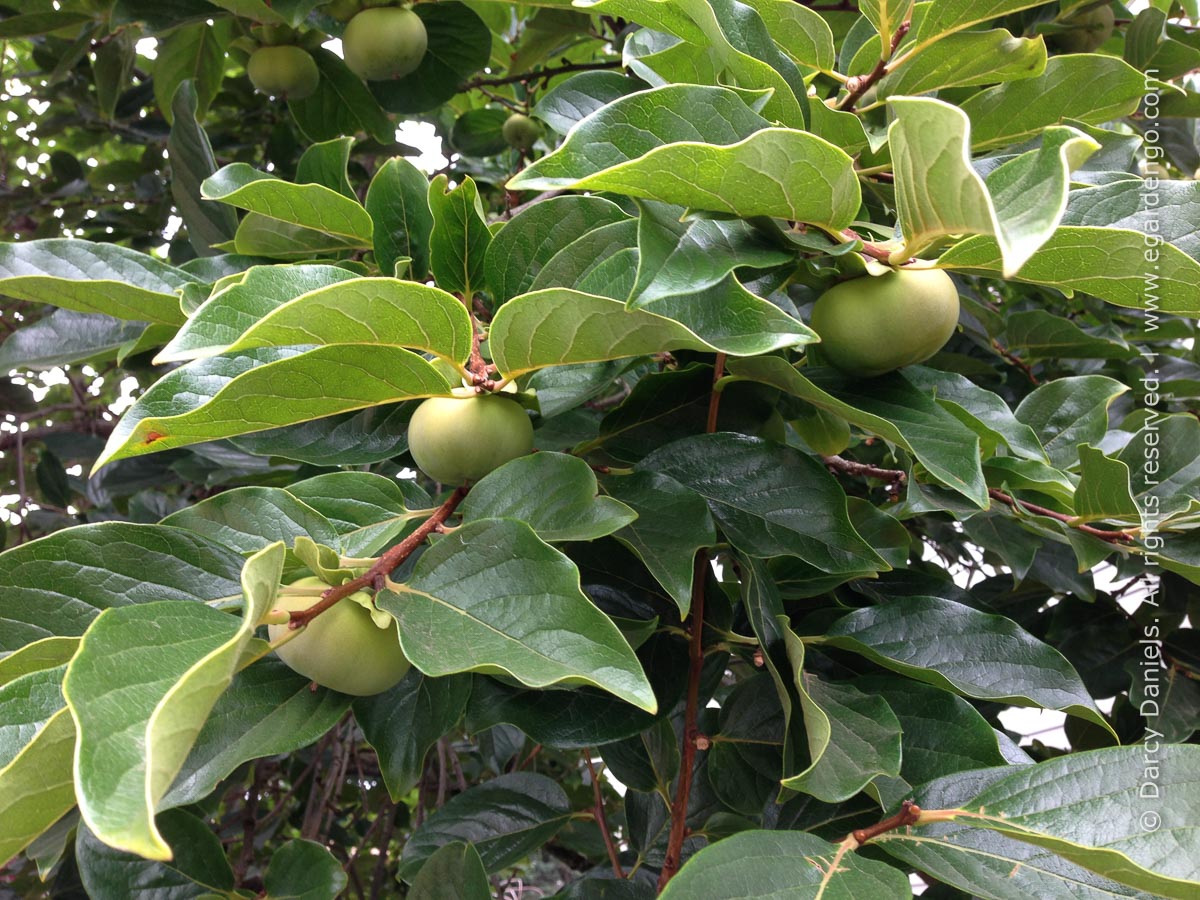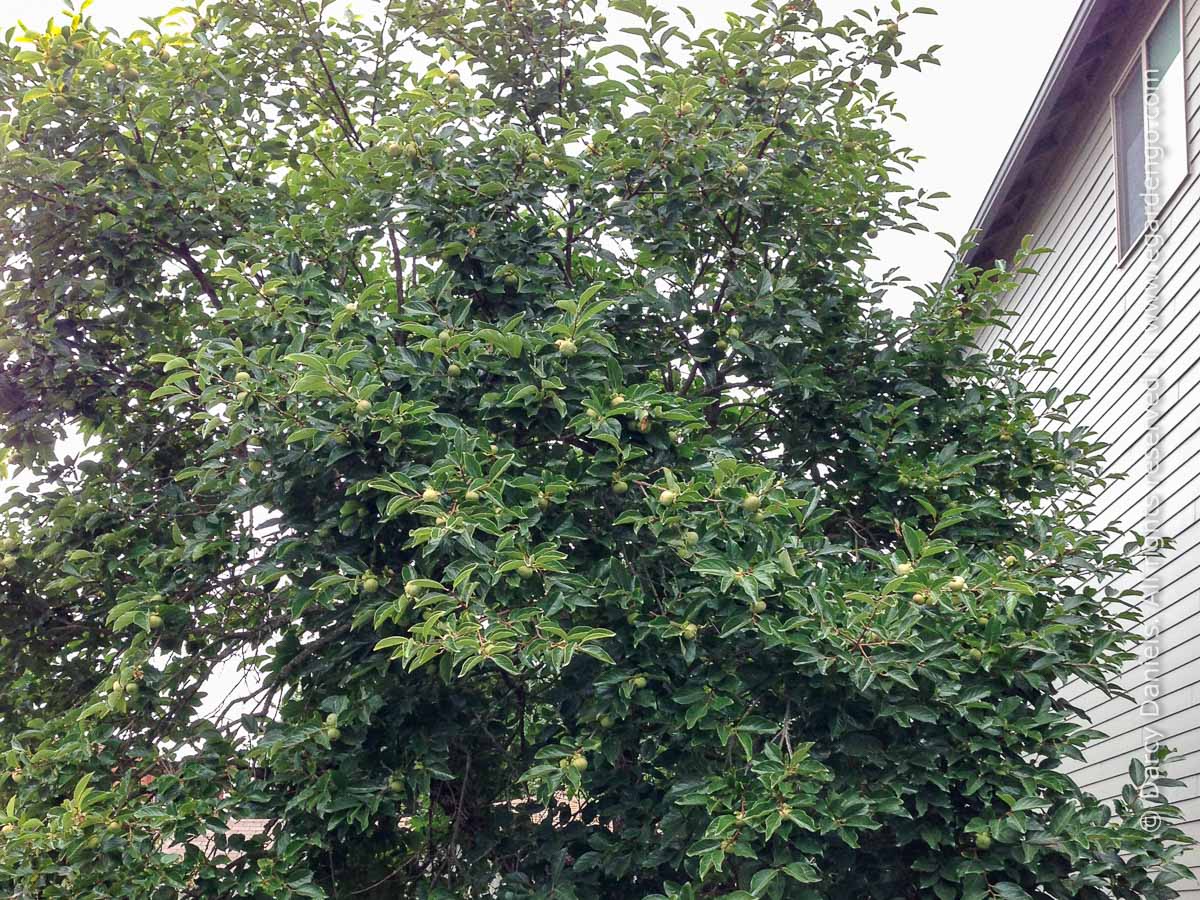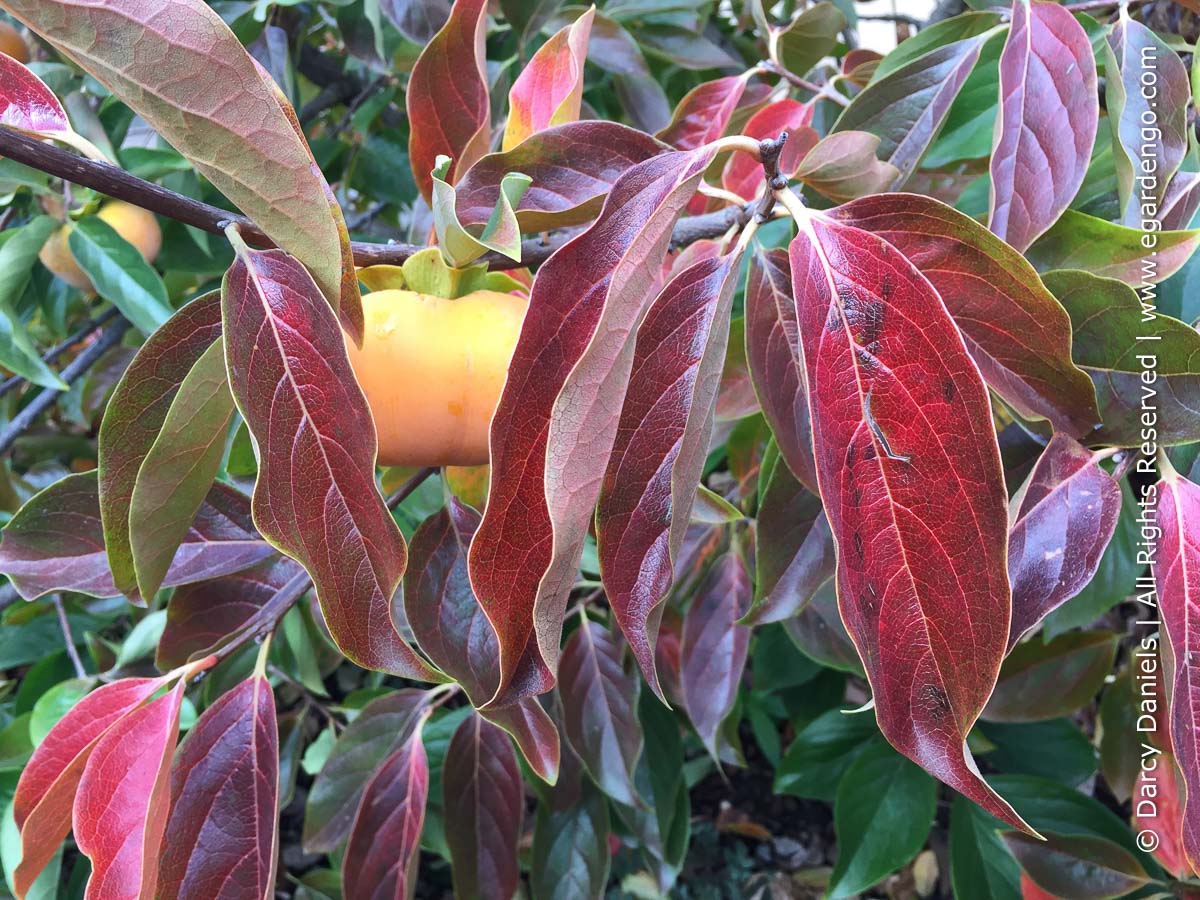Diospyros kaki
Japanese persimmon
Deciduous Tree
Growing Conditions
Zone:
7, 8, 9, 10
Exposure:
Full Sun, Afternoon Sun
Water Needs:
Regular / Even
Description
Size: 240 - 360 tall x 120 - 360 wide
Foliage Texture:
Medium
Foliage Quality:
Medium
Features: Attractive Foliage, Attracts Bees, Edible, Fall Color, Showy Fruit or Berry, Winter Interest
Foliage Color:
Green
Fall Color:
Red
Flower Color:
Ivory / Cream
Bloom Season:
Summer
Fruit Description:
Culinary Value,
Showy / Decorative
Uses and Applications
Landscape Uses:
Attracts Pollinators, Food for Foraging Wildlife, Kitchen Garden, Mixed Border, Specimen, Street Tree
Wildlife:
Bees
More Design Considerations
Season of Interest:
Winter, Spring, Summer, Fall, Pleasing Seasonal Changes, Three Seasons of Interest
Position / Role:
canopy
Collections:
Great Plant Pick
Care and Maintenance
Maintenance Level:
low

